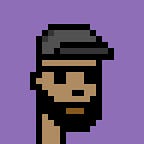Licensing Cheat Sheet
It’s important to understand the license that covers the Art Blocks pieces you own. There were questions floating around about the permissions collectors have and thought it would be helpful to share some resources about the licenses used on Art Blocks so far.
Standard disclaimer: I am not a lawyer. Shocker, I know. This article is meant as a general guide to point you in the right direction and understand what is and is not allowed given the permissions granted by the artists on the project’s page. When in doubt, ask the artists. They aren’t difficult to get in touch with — hop in discord, and you can ask questions in their channel. If permission isn’t explicitly granted by the license or artist directly, assume you don’t have permission.
Each section of this article includes links to the licenses’ official site, so defer to the legalese if anything is unclear or not covered in this TL;DR.
NFT License 2.0
Official site: https://www.niftylicense.org/
Let’s start with the license the majority of projects are covered by — the NFT License 2.0 (also called NFT License and NIFTY for short).
When Dapper Labs released CryptoKitties in November of 2017, it was apparent that traditional licenses didn’t fully capture the type of ownership that accompanies ERC-721 tokens. So, in June 2018, they released the NFT License 1.0 specifically to address the CryptoKitty community’s questions around ownership. In November of the same year, they released NFT License 2.0, which clarified important details and is broadly used in the cryptoart community.
Here are some explicit permissions this license allows:
· Use the art for your own personal, non-commercial use (e.g., the permission to print-at-home displays)
· Use the art when you’re on a marketplace that allows the purchase and sale of your art, so long as the marketplace cryptographically verifies that you are the owner.
· Use the art when you’re on a third-party website or app that allows the inclusion, involvement, or participation of your art, so long as the website/app cryptographically verifies that you are the owner, and the art doesn’t stay on the website/app after you’ve left; and
· Use the art to commercialize your own merchandise, provided that you aren’t earning more than $100,000 in revenue each year from doing so.
Here are some things you are NOT allowed to do:
· Modify the art.
· Use the art to market or sell third-party products.
· Use the art in connection with images of hatred, violence, or other inappropriate behavior.
· Try to trademark your art or otherwise acquire intellectual property rights in it.
This license gives owners a ton of room to get creative with their collections while maintaining the artistic integrity of the project. One of my favorite examples is Stina Jones’ Algobots. Over in the AlgobotsDAO community, members are already experimenting with fun Algobots merchandise.
CC BY-NC 4.0
Official site: https://creativecommons.org/licenses/by-nc/4.0/
The Creative Commons Attribution-NonCommercial 4.0 International license gives collectors the right to share, use, and build on work as long as they give appropriate credit to the original artists and indicate if the work has been changed at all.
With CC BY-NC 4.0, you can:
· Share — copy and redistribute the material in any medium or format.
· Adapt — remix, transform, and build upon the material.
As long as you:
· Give appropriate credit, provide a link to the license, and indicate if changes were made. You may do so in any reasonable manner, but not in any way that suggests the licensor endorses you or your use.
· Do not use the material for commercial purposes.
This permits collectors to print their pieces if they want to frame and display them.
GNU Lesser General Public License
Official site: https://www.gnu.org/licenses/lgpl-3.0.en.html
So far, the only project to use this license is Petri by Fabin Rasheed. The GNU Lesser gives developers permission to use components of the software in their own projects as long as they, in turn, make their projects public as well.
Importantly, this license does not grant collectors any right over the outputs. But I reached out to clarify the use of the GNU license, and Fabin said,
Yes, it covers only the code, and the reason I used that was because of using p5js. In terms of the art as such, I’m keeping it completely open for reproduction or alteration.
However, if the GNU license is used by future projects, make sure to ask the artist for permission to use the outputs since none are explicitly granted.
So far, every Art Blocks project gives collectors the right to print work they own for personal use. The NFT License also grants special permissions to commercialize up to 100k, while the GNU License grants developers the ability to reuse code in their own projects.
Since Art Blocks is working in a new creative space, it feels like traditional licenses have blind spots. But again, when in doubt, defer to the official legalese and/or the artists themselves.
